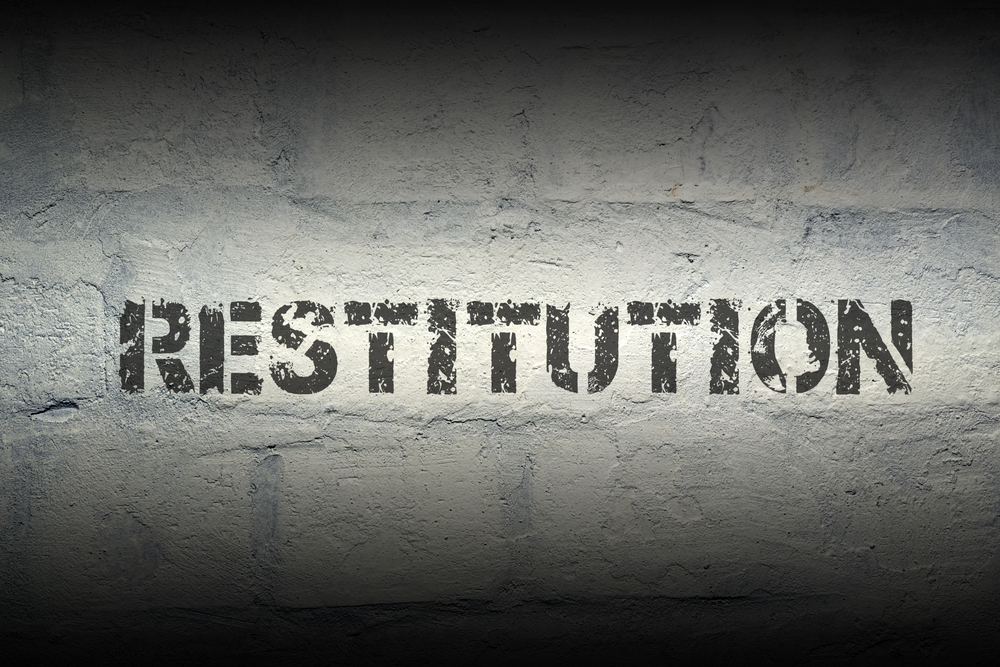In criminal defense law, if someone is found guilty of a criminal act, they might be ordered not just to serve prison time, but also to pay something called restitution. Restitution is a specific dollar amount that the court orders a defendant to pay to the victims of their crime. Restitution is typically ordered by a judge when someone suffers financial loss due to the criminal activity of the defendant. Restitution rests on the theory that the criminal should be responsible to completely restore what their victim lost due to their crime.
An example of restitution would be if someone trespassed onto someone else’s property and spray-painted their house. If the perpetrator was found guilty, the judge might order them to pay the homeowner the amount of money that it costs to undo the damage that was done. Restitution can be ordered for many different things and is decided upon by the judge who presides over the case.

When does restitution apply?
Usually, restitution is not the only consequence of a criminal act. It is typically in addition to a sentence such as jail time or community service. You can receive just restitution as a consequence of your crime, but that is fairly rare. Both states and federal jurisdictions have guidelines about who is allowed to receive restitution and how to calculate the amount owed. Depending on where your case is tried, the rules concerning whether you will be required to pay restitution and how much you might have to pay will differ.
The difference between fines and restitution
The difference between someone being ordered to pay a fine and restitution is that restitution is paid directly to the victim of the crime as compensation for any consequences they suffered either financially or as the result of an injury. A fine is paid to the government jurisdiction and is meant to be purely a punishment for a crime that is committed. A fine is not meant to compensate the government for any injuries; it is meant to deter other people from committing crimes.
It is possible for someone to be ordered to pay both fines and restitution. If a defendant is found guilty of stealing government property, they might be ordered to pay restitution for what they stole, and they can also be fined as a means of punishment. The main difference is who the money goes to and the reason for the defendant being ordered to pay.
What are the types of cases where restitution may be ordered?
Restitution can be made in three different types of cases.
- Restitution might be ordered if there is a breach of contract, which is when a party has not followed through with their contractual agreement. The restitution is calculated by the amount of breach that the other party suffered. It usually equals the rest of what was not paid on the contract made.
- In some personal injury lawsuits, restitution might be ordered instead of compensation. The restitution is awarded for economic damages, not noneconomic damages.
- In criminal court, a defendant is usually ordered to pay restitution to their victim or victims to make them “whole” again.
How do restitution payments work?
When a defendant is found guilty of a crime, the judge may be able to award the victim or victims harmed through the crime as a part of the sentencing process. How the victims are capable of collecting and how the money is dispersed can vary from state to state. Some states require that the defendant set up an inmate account, where any money that they make while incarcerated goes directly to the victims of the crime.
Typically, the court will require that the defendant pay a specific percentage of their wages, whether they are incarcerated or working. Those wages are usually garnished and sent directly to the victim until the restitution has been paid off.
Restitution is how most criminal courts repay victims of crime for what was lost through the criminal activity of the defendant. Unlike a fine, the reward is made directly to the victim or victims who were harmed as a result of the criminal’s actions.